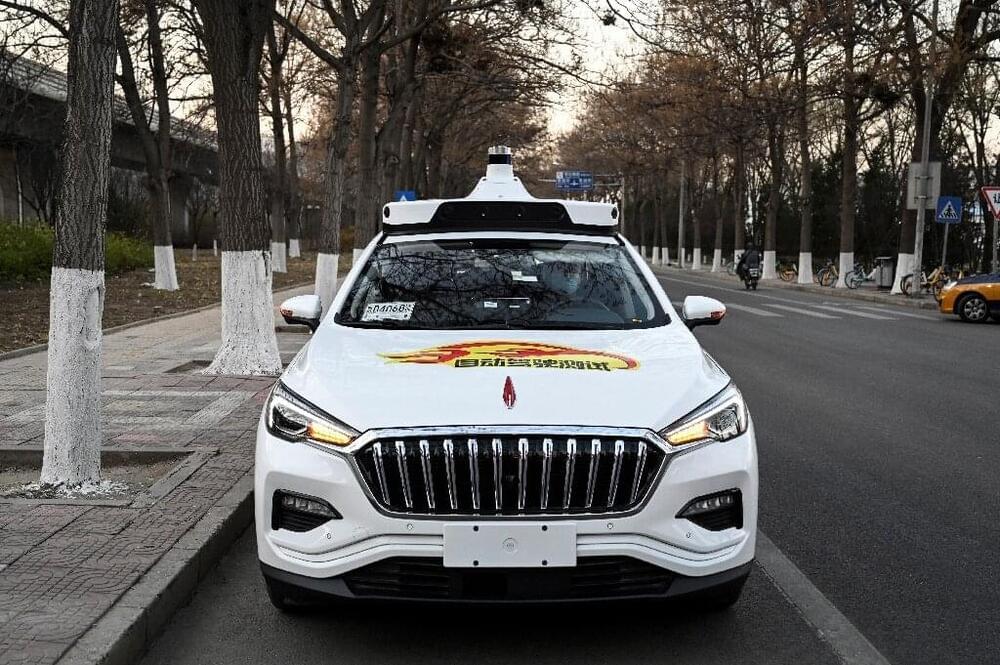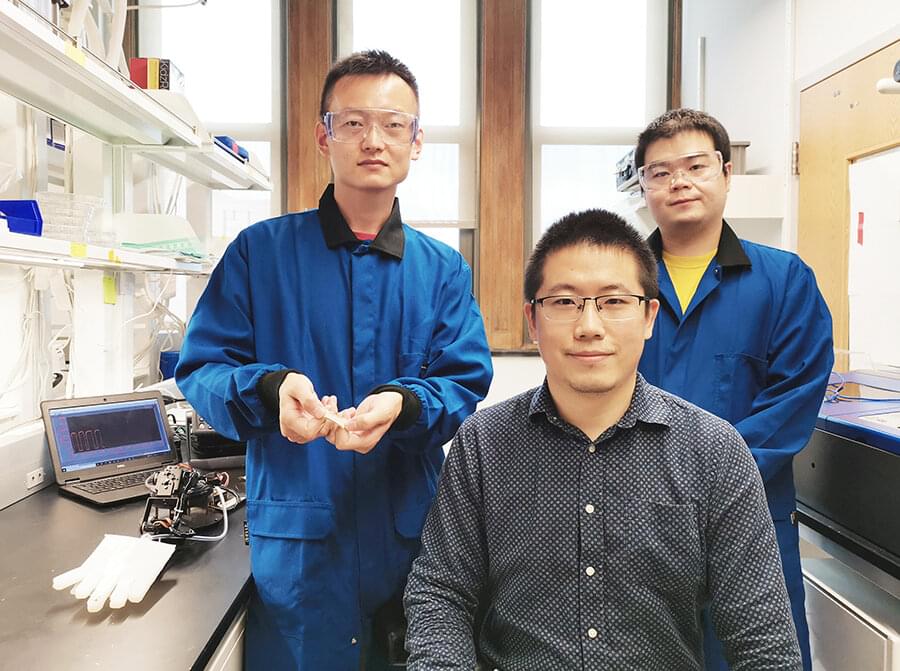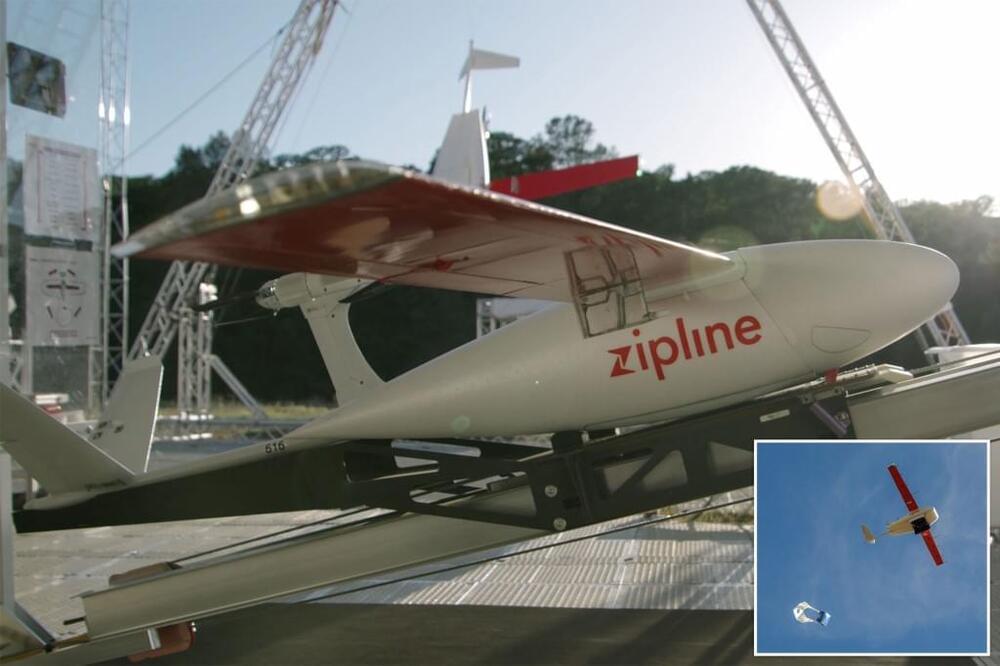Giant strides will be made in treating haemophilia, while an Alzheimer’s drug has reinvigorated interest in therapies for dementia | The World Ahead.
Our universe has been developing for about 14 billion years, but human-level intelligence, at least on Earth, has emerged in a remarkably short period of time, measured in tens or hundreds of thousands of years. What then is the future of intelligence?
For more videos and information from Ray Kurzweil click here http://bit.ly/19H84ys.
For more videos on the far future of intelligence in the universe click here http://bit.ly/19U6CsB
Join our Facebook community: https://www.facebook.com/CloserToTruthTV
Follow us on twitter at closertotruth.
Closer To Truth presents the world’s greatest thinkers exploring humanity’s deepest questions. Discover fundamental issues of existence. Engage new and diverse ways of thinking. Appreciate intense debates. Share your own opinions. Seek your own answers.
A team of researchers from TU Delft managed to design one of the world’s most precise microchip sensors. The device can function at room temperature—a ‘holy grail’ for quantum technologies and sensing. Combining nanotechnology and machine learning inspired by nature’s spiderwebs, they were able to make a nanomechanical sensor vibrate in extreme isolation from everyday noise. This breakthrough, published in the Advanced Materials Rising Stars Issue, has implications for the study of gravity and dark matter as well as the fields of quantum internet, navigation and sensing.
One of the biggest challenges for studying vibrating objects at the smallest scale, like those used in sensors or quantum hardware, is how to keep ambient thermal noise from interacting with their fragile states. Quantum hardware for example is usually kept at near absolute zero (−273.15°C) temperatures, and refrigerators cost half a million euros apiece. Researchers from TU Delft created a web-shaped microchip sensor that resonates extremely well in isolation from room temperature noise. Among other applications, their discovery will make building quantum devices much more affordable.
A small team of researchers from Lawrence Berkeley National Laboratory and the University of California has found that battery-powered trains could become economical as soon as 2023. In their paper published in the journal Nature Energy, the group argues that improved battery technology and cheap, renewable energy could soon allow battery power to compete with diesel fuel to power trains. Federico Zenith with NTNU, Trondheim, has published a News & Views piece in the same journal issue outlining the reasons for converting trains to battery power and gives an overview of the work done by the team on this new effort.
Trains, as Zenith notes, haul approximately 40 percent of intercity freight in the U.S., and sending things by train is cheaper than using trucks. Most of the freight trains in the U.S. run on diesel fuel, he states, spewing approximately 0.6 percent of total U.S. carbon emissions. In this new effort, the researchers suggest that switching to battery power could prevent these emissions.
Electric trains in the U.S. get their power from overhead lines—a system that is expensive and inefficient. The team suggests that batteries could provide a better option; more specifically, they claim that a single locomotive equipped with a 14-megawatt battery system would be sufficient to replace a train powered by a diesel engine. They further claim that such a locomotive could carry a train approximately 240 kilometers on a single charge. This would consume half the energy of a diesel-powered train. And if the battery is charged using a renewable resource, it would reduce the carbon footprint of an electric train to zero.
It looks like a normal car but the white taxi by the kerb has nobody driving it, and communicates with customers digitally to obtain directions and take payment.
Beijing this week approved its first autonomous taxis for commercial use, bringing dozens of the so-called “robotaxis” to the streets of the Chinese capital.
The vehicles can only carry two passengers at a time and are confined to the city’s southern Yizhuang area.
Cost-slashing innovations are underway in the electric power sector and could give electricity the lead over fossil-based combustion fuels in the world’s energy supply by mid-century. When combined with a global carbon price, these developments can catalyze emission reductions to reach the Paris climate targets, while reducing the need for controversial negative emissions, a new study finds.
“Today, 80 percent of all energy demands for industry, mobility or heating buildings is met by burning—mostly fossil—fuels directly, and only 20 percent by electricity. Our research finds that relation can be pretty much reversed by 2050, making the easy-to-decarbonise electricity the mainstay of global energy supply,” says Gunnar Luderer, author of the new study and researcher the Potsdam Institute for Climate Impact Research. “For the longest time, fossil fuels were cheap and accessible, whilst electricity was the precious and pricier source of energy. Renewable electricity generation—especially from solar photovoltaics—has become cheaper at breath-taking speed, a pace that most climate models have so far underestimated. Over the last decade alone prices for solar electricity fell by 80 percent, and further cost reductions are expected in the future. This development has the potential to fundamentally revolutionize energy systems.
In the future, soft robotic hands with advanced sensors could help diagnose and care for patients or act as more lifelike prostheses.
But one roadblock to encoding soft robotic hands with human-like sensing capabilities and dexterity has been the stretchability of pressure sensors. Although pressure sensors—needed for a robotic hand to grasp and pick up an object, or even take a pulse from a wrist—have been able to bend or stretch, their performance has been significantly affected by such movement.
Researchers at the Pritzker School of Molecular Engineering (PME) at the University of Chicago have found a way to address this issue and have designed a new pressure sensor that can be stretched up to 50 percent while maintaining almost the same sensing performance. It is also sensitive enough to sense the pressure of a small piece of paper, and it can respond to pressures almost instantaneously.
To address the growing threat of cyberattacks on industrial control systems, a KAUST team including Fouzi Harrou, Wu Wang and led by Ying Sun has developed an improved method for detecting malicious intrusions.
Internet-based industrial control systems are widely used to monitor and operate factories and critical infrastructure. In the past, these systems relied on expensive dedicated networks; however, moving them online has made them cheaper and easier to access. But it has also made them more vulnerable to attack, a danger that is growing alongside the increasing adoption of internet of things (IoT) technology.
Conventional security solutions such as firewalls and antivirus software are not appropriate for protecting industrial control systems because of their distinct specifications. Their sheer complexity also makes it hard for even the best algorithms to pick out abnormal occurrences that might spell invasion.
Artificial intelligence has reached a point where it can compose text that sounds so human that it dupes most people into thinking it was written by another person. These AI programs—based on what are called autoregressive models—are being successfully used to create and deliberately spread everything from fake political news to AI-written blog posts that seem authentic to the average person and are published under human-sounding byline.
However, though autoregressive models can successfully fool most humans, their capabilities are always going to be limited, according to research by Chu-Cheng Lin, a Ph.D. candidate in the Whiting School of Engineering’s Department of Computer Science.
“Our work reveals that some desired qualities of intelligence—for example, the ability to form consistent arguments without errors—will never emerge with any reasonably sized, reasonably fast autoregressive model,” said Lin, a member of the Center for Language and Speech Processing.
Walmart has launched an instant drone delivery system for customers living within a 50-mile radius of its headquarters in northern Arkansas.
The retail giant has partnered with drone company Zipline to launch the new system that will offer on-demand delivery for health and wellness and consumable items within 50 miles of the Walmart Neighborhood Market in Pea Ridge, according to a press release.
“It’s unbelievably exciting, we’ve been working towards this day for many many years,” Zipline’s CEO Liam O’Connor told CBS News.









